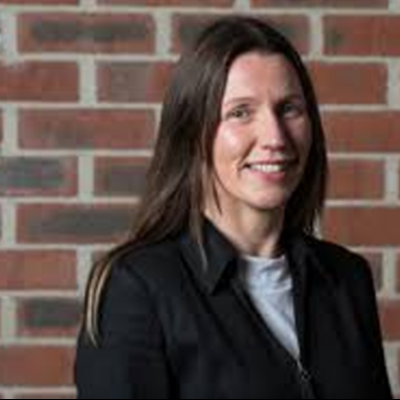The Be ACTIVE Framework
Thomas Broderick; Dr Eileen O’Leary; Linda O’Sullivan; and Professor Jim O’Mahony
What is the idea?
The Be ACTIVE Framework is a theoretical, structured, exploratory framework that aims to guide and support, in a stepwise manner, all those who teach, in the planning, implementation, evaluation and improvement of active learning in their everyday teaching practice. It is built on the mnemonic ‘Be ACTIVE’, where each letter represents a step in the process to guide individuals implementing active learning.
B: Begin by reflecting on your current practice
e: Ethical consideration
A: Analyse your context & Assess possible Active Learning strategies
C: Choose an appropriate Active Learning strategy & Communicate the why, what and how with your students
T: Build Trust & Test the strategy with your class
I: Investigate, Innovate, Improve and Be Inclusive
V: Validate through feedback from students, self, & peers, and add Value by consulting the literature
E: Evaluate the Evidence, Enhance the process and Engage in further Active Learning

This framework is purposely designed in a cyclical manner, to demonstrate that the process is a continuous development and improvement cycle. It is available as an interactive poster, where each step in the process has a corresponding short video tutorial outlining the relevant considerations and an activity sheet to record the user’s ideas, thoughts, and evidence. The tutorials explore the how and why of each step in the cycle, highlight the advantages of Active Learning to users and provide a rationale that can be shared with students to encourage enthusiastic engagement in active learning. The activity sheets provide guiding questions to help users adapt the ideas to their own context, prompt thinking through these ideas and provide a means to record, research, discuss and improve their practice.
Why this idea?
Active Learning has received considerable attention in recent years as educators continue to look for more effective ways of engaging students in different environments and contexts. However, shifting from the more traditional didactic transmission mode presents challenges for educators and their students. The ‘Be ACTIVE’ Framework has been developed to provide support and address some of these challenges. This framework gives the user the ‘tips’ and the ‘how to’ without the need to complete an entire course! It should also encourage their further engagement with the literature as their practice improves and their interest in Active learning grows.
How could others implement this idea?
The ‘Be ACTIVE Framework’ can be used by individuals interested in implementing and evaluating new active learning approaches.
They simply follow each step on the mnemonic ‘Be ACTIVE’ as outlined below, i.e.:
- Start with the ‘B activity’, where users are encouraged to ‘self-reflect’ on how they are currently teaching and what they can start to do differently in their context.
- The ‘e Activity’ is aimed at those interested in the scholarship of teaching and learning and alerts such users to the importance of ethics and getting ethical approval prior to conducting educational research.
- Watch the tutorial and complete the ‘A activity’, which encourages users to consider:
- Why use active learning?
- Where will teaching take place (face-to-face, online etc)?
- What active learning strategy might work in this instance?
- What is the goal of your active learning strategy?
- Watch the tutorial and complete the ‘C activity’ which guides users on their choice of active learning strategy and considers communicating the why, what, and how of active learning with their students.
- Watch the tutorial and complete the ‘T activity’, which prompts users to build a trusting relationship with students, so they feel safe and are willing to take risks, ask questions and share their thoughts and ideas
- Watch the tutorial and complete the ‘I activity’, which encourages users to consider questions like:
- Were their instructions clear?
- Could their students follow them easily?
- Did they over or underestimate the time for the activity and did this impact on students’ level of engagement?
- Did it work for them and their students?
- What would they remove, change or add?
- What did they learn, how could they make the class more inclusive?
- Watch the tutorial and complete the ‘V activity’ which leverages Brookfield’s Four Lens model, to guide the user to source feedback from peers, self, students and the literature and examine how they can change their practice to add value as a result of feedback.
- Watch the tutorial and complete the ‘E-activity’, which prompts users to assess the impact of their initiative and how the learning experience could be improved further. It encourages the users to engage with students as partners in this process, the literature and others in their institution.
Links to the interactive poster, tutorials and activity sheets are included in ‘Links to Tools and Resources’.
Transferability to different contexts
The Be ACTIVE Framework is useful in all contexts where learning happens. It is not context based, the short video tutorials provide tips and the activity sheets provide ‘guiding questions’ that each user can respond to in the context of their own teaching. It is applicable to all disciplines, to individuals teaching at all levels, in all environments, face-to-face, online (synchronous or asynchronous), distance autonomous learners, etc. It is an approach, guided and supported with resources to help all those who teach, develop policy or design curriculum to embed Active Learning in their practice.
Even though what is outlined here shows how the Be ACTIVE Framework can guide individual practice, this framework can also be exploited at institutional level to foster best practice. It can guide new and structured conversations around the scholarship of teaching and learning in relation to active learning and encourage uptake in pedagogical research.
Links to tools and resources

The interactive, Be ACTIVE Framework Poster can be accessed by clicking on ‘Be ACTIVE Framework’ (https://tlu.cit.ie/contentfiles/ALN%20-%20Conference%202021%20Poster%20Final.pdf) or ‘Be ACTIVE Framework Stepwise’ (https://view.genial.ly/620be0b7ab3f04001287d701)
The resources associated with each phase of the Be ACTIVE Framework are also made available below:
B: Begin teaching
Activity B: Initial Self-Reflection
References: (Miller, 2010; Moon, 2004; Moon, 2006; Moon, n.d.-a, n.d.-b)
e: Ethical Consideration
Activity e: Consider Ethics Application
A: Analyse your context, Assess possible Active Learning strategies
Overview Video: Analyse and Assess
Activity A: Analyse and Assess
References: (Elsevier Author Services, n.d.; Honeycutt, n.d.; Moss, 2020; Open Courses, n.d.; The Active Learning Network, n.d.; The K. Patricia Cross Academy, n.d.)
C: Choose an appropriate Active Learning strategy & Communicate the why what and how with your students
Overview Video: Choose and Communicate
Activity C: Choose and Communicate
References: (Bunce et al., 2010; Chickering & Gamson, 1987; Christersson & Staaf, 2019; Felder & Brent, 2009; Halloun & Hestenes, 1985; Moss, 2020; O’Neill & McMahon, 2005; Revell & Wainwright, 2009)
T: Build Trust & Test the strategy with your class
Overview Video: Build Trust & Test
Activity T: Build Trust & Test
References: (Beyond Penguins and Polar Bears, n.d.; Hattie & Zierer, 2017; Tharayil et al., n.d.; Tofade et al., 2013)
I: Investigate, Innovate, Improve and Be Inclusive.
Overview Video: Investigate, Innovate, Improve and be Inclusive
Activity I: Investigate, Innovate, Improve and be Inclusive
References: (CAST, n.d.; Miller, 2010)
V: Validate through feedback from, student’s, self, & peers, and add Value by consulting the literature
Overview Video: Validate & Add Value
Activity V: Validate & Add Value
References: (Brookfield, 2002; Mentimeter, n.d.; Miller, 2010; Poll Everywhere, n.d.)
E. Evaluate the Evidence, Enhance the process and Engage in further Active Learning
Overview Video: Evaluate evidence, Enhance & Engage
Activity E: Evaluate evidence, Enhance & Engage
References: (The Active Learning Network, n.d.)
References
Beyond Penguins and Polar Bears. (n.d.). Questioning Techniques: Research-Based Strategies for Teachers — Energy and the Polar Environment — https://beyondpenguins.ehe.osu.edu/issue/energy-and-the-polar-environment/questioning-techniques-research-based-strategies-for-teachers
Brookfield, S. D. (2002). Using the lenses of critically reflective teaching in the community college classroom. New Directions for Community Colleges, 2002(118), 31–38. https://doi.org/10.1002/cc.61
Bunce, D. M., Flens, E. A., & Neiles, K. Y. (2010). How long can students pay attention in class? A study of student attention decline using clickers. Journal of Chemical Education, 87(12), 1438–1443. https://doi.org/10.1021/ed100409p
CAST (n.d.) UDL On Campus: Universal Design for Learning in higher education. http://udloncampus.cast.org/home
Chickering, A. W., & Gamson, Z. F. (1987). Seven principles for good practice in undergraduate education. AAHE Bulletin, 3, 7.
Christersson, C., & Staaf, P. (2019). Learning & Teaching paper #5. Promoting active learning in universities: Thematic Peer Group Report. https://eua.eu/resources/publications/814:promoting-active-learning-in-universities-thematic-peer-group-report.html
Elsevier Author Services. (n.d.). FINER: a Research Framework. https://scientific-publishing.webshop.elsevier.com/research-process/finer-research-framework/
Felder, R. M., & Brent, R. (2009). Active Learning: An Introduction. ASQ Higher Education Brief 2(4).
Halloun, I. A., & Hestenes, D. (1985). The initial knowledge state of college physics students. American Journal of Physics, 53(11), 1043-1055. https://doi.org/https://doi.org/10.1119/1.14030
Hattie, J., & Zierer, K. (2017). 10 mindframes for visible learning: Teaching for success. Routledge.
Honeycutt, B. (n.d.). Lecture Breakers Podcast & Show Notes. https://barbihoneycutt.com/blogs/podcast
Mentimeter. (n.d.). Create live word clouds. https://www.mentimeter.com/features/word-cloud
Miller, B. (2010). Brookfield’s Four Lenses: Becoming a Critically Reflective Teacher. Faculty of Arts Learning and Teaching Committee, The University of Sydney.
Moon, J. (2004). A handbook of reflective and experiential learning: Theory and practice. RoutledgeFalmer.
Moon, J. (2006). A generic framework for reflective writing. A handbook for reflective practice and professional development., 161–163. Abingdon: Routledge.
Moon, J. (n.d.-a). An example of a graduated scenario exercise – ‘The Park’. http://www.cetl.org.uk/UserFiles/File/reflective-writing-project/ThePark.pdf
Moon, J. (n.d.-b). Reflective Writing – some initial guidance for students. https://efs.weblogs.anu.edu.au/files/2018/01/Moon-on-Reflective-Writing.pdf
Moss, P. G. (2020). Chunking Lectures – it’s a bit of a no-brainer. https://paulgmoss.com/2020/09/13/chunking-lectures-its-a-bit-of-a-no-brainer/
O’Neill, G., & McMahon, T. (2005). Student-centred learning: What does it mean for students and lecturers? Emerging Issues in the Practice of University Learning and Teaching., 1. http://www.aishe.org/readings/2005-1/
Open Courses (n.d.) Enhancing Teaching through Interactive Classes to Engage Students. https://opencourses.ie/opencourse/enhancing-teaching-through-interactive-classes-to-engage-students/
Poll Everywhere. (n.d.). 20 word cloud activities for a live audience. Retrieved July 14, 2021, from https://blog.polleverywhere.com/word-clouds-for-open-response-audience-activity/
Revell, A., & Wainwright, E. (2009). What Makes Lectures “Unmissable”? Insights into Teaching Excellence and Active Learning. Journal of Geography in Higher Education, 33(2), 209–223. https://doi.org/10.1080/03098260802276771
Tharayil, S., Borrego, M., Prince, M., Nguyen, K. A., Shekhar, P., Finelli, C. J., & Waters, C. (n.d.). Strategies to mitigate student resistance to active learning. https://doi.org/10.1186/s40594-018-0102-y
The Active Learning Network – A community for anyone interested in active learning. (n.d.). https://activelearningnetwork.com/
The K. Patricia Cross Academy. (n.d.). Videos. https://kpcrossacademy.org/videos/
Tofade, T., Elsner, J., & Haines, S. T. (2013). Best practice strategies for effective use of questions as a teaching tool. American Journal of Pharmaceutical Education 77(7).
Image Attributions
Figure 1. Be ACTIVE Framework by Thomas Broderick, Eileen O’Leary, Jim Mahony, and Linda O’Sullivan, is used under CC-BY 4.0 Licence
Figure 2. Be ACTIVE Framework poster by Thomas Broderick, Eileen O’Leary, Jim Mahony, and Linda O’Sullivan, is used under CC-BY 4.0 Licence



